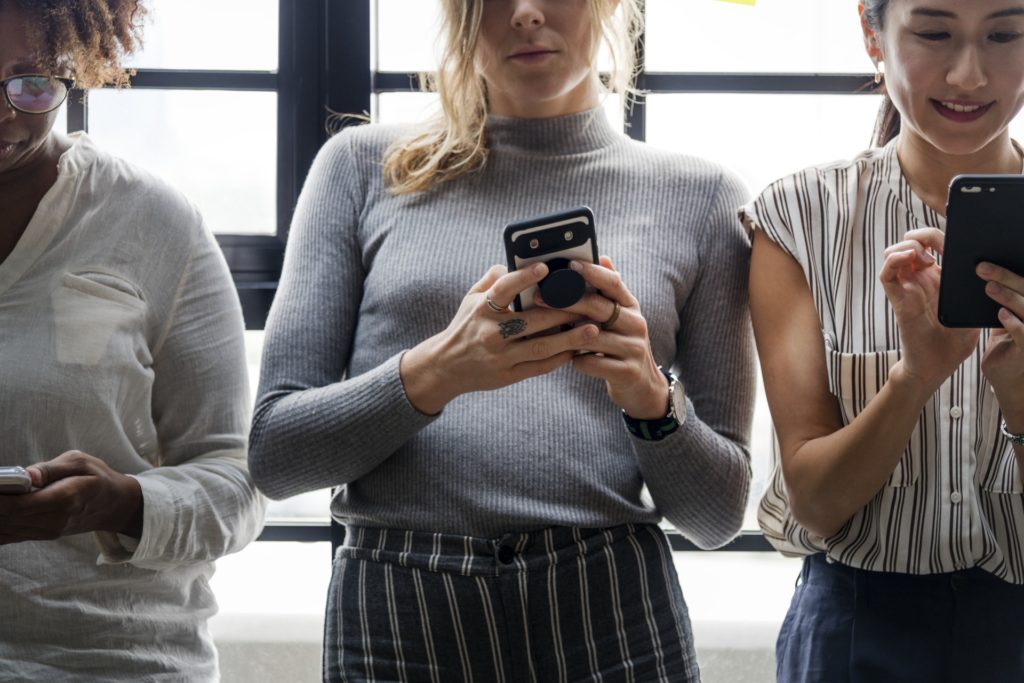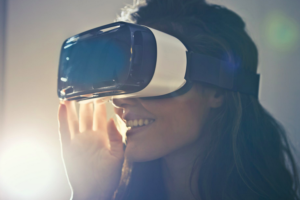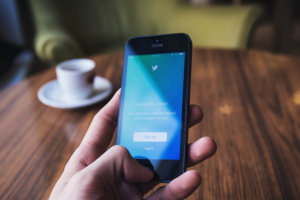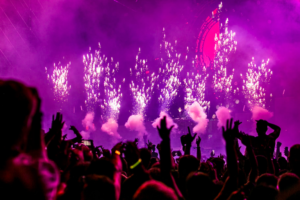Livestreaming in China is growing, offering hopes of fame and wealth to ordinary Chinese
By the middle of last year, China had more than 425 million livestreamers nationwide.
Read more –> CNBC
By the middle of last year, China had more than 425 million livestreamers nationwide.
Read more –> CNBC
 As a brand marketer, you know how important it is to positively represent your company’s image and values in everything you do—which may make it difficult to reach the broadest possible audience without creating conflict.
As a brand marketer, you know how important it is to positively represent your company’s image and values in everything you do—which may make it difficult to reach the broadest possible audience without creating conflict.
Many brands are engaging in programmatic ad spends, and they may not be aware of the specific sites where their ads are appearing. But even if unintentional, a placement that doesn’t seem to align with your brand values can cause a negative impact.
A recent CMO Council report found that 72 percent of marketers are concerned about brand integrity relating to digital advertising, and for good reason: more than a quarter have experienced incidents in which their advertisements were placed next to offensive content. The Guardian reported that in 2016, extremists and preachers of hateful viewpoints generated more than $300,000 in revenues from YouTube ads purchased by brands including L’Oreal, Sainsbury’s, and The Guardian itself.
Consumers are paying attention, too, and if your brand advertises on a platform that offends them, they may change their purchasing behavior. Thirty-seven percent of those surveyed said that they would think carefully about whether to buy from the brand again; nine percent said they would complain about the issue; and 10% said they would boycott the brand as a result.
If you want to preserve your brand integrity, consider shifting your marketing dollars away from programmatic ad buys, and into experiential marketing events that enable your brand to control every aspect of the experience.
Why experiential marketing?
Creating an immersive experience, such as a product launch, a conference, or a festival, allows you to carefully curate an agenda that aligns fully with your brand vision. You can customize everything from the entertainment to the expert-driven seminars to the color of the cupcakes, ensuring that the content is not only engaging to your audience, but fully supports your branded viewpoint.
By focusing on live events, you’re able to create a direct connection to your audience with no filter in between. That allows you to show your audience what you stand for, and gives them the ability to participate by providing real-time feedback, both through live responses and real-time social media engagement. By carefully monitoring your live event app or social channels during your event, you’ll be able to instantly address and remedy any concerning issues.
Safely expanding your reach
Live events can be expensive, and your audience numbers may be limited—so, while experiential marketing may provide more control over brand safety, how can you ensure that you reach enough of your potential audience to make the investment worthwhile?
Consider amplifying your experience with live streaming which can expand your audience exponentially with a digital broadcast strategy. Interested consumers won’t need a ticket for the event; they’ll be able to tune in at any time from the comfort of their living room or even a bus ride. Events that might reach just a few thousand live attendees can now reach millions, as with Apple’s WWDC conference, which reached an estimated 2 million people this year via livestream. Weekend one of the 2019 Coachella Music & Art Festival’s livestream audience grew 90% year over year from 2018 to reach an astounding audience of 82.9 millions views significantly benefiting the title live stream sponsor T-Mobile as well as Coca-Cola and Garnier in Canada.
Of course, expanding your audience virtually also leaves your brand vulnerable to safety hazards, if you provide unrestricted communication channels for participants to share their thoughts. It’s important to strike a balance between encouraging free thought and protecting your brand image on communication platforms.
In order to do so effectively, you can use algorithm-based tools that instantly filter out messages with derogatory comments or negative brand associations on your in-stream social channel. If brand safety is a concern, it makes sense to encourage fans to comment and participate within the platform itself, rather than asking them to comment with a hashtag on services like Twitter, Facebook, and Instagram, where you can’t moderate the conversation. You can also ask users to register with their real name before commenting, and ensure that they are of legal age for the content, which will help to create a positive and engaging discussion.
Capitalizing on your event
Your event has gone off without a hitch, and you live streamed it to an audience of millions—but that’s not the end of the story.
Armed with hours of high-quality live footage, you can repurpose your live event footage into curated video segments to reach new audiences and engage with your existing audience further. Encourage your audience to share links to the footage on their social media channels, building your own viral marketing strategy to grow your follower base.
Promoting your video-on-demand through advertising can also be a supplementary strategy to consider to expand your reach further—but when doing so, consider using targeted social media advertising, rather than advertising on YouTube channels or on media websites that you haven’t pre-vetted.
Maintaining a positive brand reputation is important for building an audience of engaged followers that will advocate for your company to their own friends and family. By focusing on building proprietary events and live content that you can execute based on your brand values, you’ll be able to broadcast what your company is all about, and create a committed audience of engaged followers who value what you do.
 Your brand is running your first livestream. Your live production team has got the crew, cameras and equipment all set up; but video production is only a fraction of the overall livestreaming experience. In order to deliver a true best-in-class experience, your brand needs to focus on strategies for boosting engagement among viewers during the livestream itself – in effect transforming viewers into participants. This allows you to achieve the holy grail of extended user watch or engagement time—a key remedy for brand marketers looking to overcome the challenges of cord cutting, ad blocking and brand safety.
Your brand is running your first livestream. Your live production team has got the crew, cameras and equipment all set up; but video production is only a fraction of the overall livestreaming experience. In order to deliver a true best-in-class experience, your brand needs to focus on strategies for boosting engagement among viewers during the livestream itself – in effect transforming viewers into participants. This allows you to achieve the holy grail of extended user watch or engagement time—a key remedy for brand marketers looking to overcome the challenges of cord cutting, ad blocking and brand safety.
Maximizing engagement on a livestream relies on a savvy combination of tools and techniques, designed to ensure that your audience feels like active participants in the broadcast from start to finish. Brands can connect with their customers in a much more impactful way with engaging live content than they can with video on demand: Viewers typically watch Facebook Live streams for three times as long as prerecorded online video, Go-Globe found and attract 7 times the interactions. The newly launched LinkedIn Live platform reports 24 times more comments and 7 times more interactions than VOD.
Here are some proven best practice strategies to drive engagement and build audience participation when running a livestreaming broadcast:
Coca-Cola livestreamed the Vive Latino Festival in Mexico for many years. Vive Latino is an institution in the rock scene in Latin America that has featured the top artists across the world for over 20 years. Coke created a rich user experience that featured a branded schedule widget showcasing the nearly 80 artists appearing across six stages over two days. The live stream broadcast 3 channels of performances for 11 ½ hours each day and allowed viewers to pre-select their favorite artist performance by day, channel and time. Coke sent SMS reminders to those fans that had requested notifications to be sure not to miss the favorite artists’ performances, contributing to a stunning watch time average of 29 minutes per viewer on mobile and 113 minutes per viewer on desktop that saw an audience of nearly 4 million tune in.
After optimizing for engagement, how do you track how successful your efforts were? Focus on metrics such as:
Engagement during the event should also lead into post-event engagement, so you’ll likely see many of your most engaged users stream footage on-demand after the event is over. By taking steps to ensure that your livestream audience members feel like active participants who are valued by your brand, you’ll be able to count on their ongoing loyalty and advocacy.
Thirty years ago, if you wanted your target audience to know about your product, you knew exactly how to reach them. Take out an ad in a magazine or newspaper, or run a 30-second ad spot on their favorite network, and you had guaranteed eyes on your brand.
Now, the game has changed. In 1998, 73 million people watched the series finale of Seinfeld. Those numbers are unheard of today: Last year’s highest-rated TV series, the ill-fated Roseanne reboot, only drew 10.5 million viewers for its much-hyped premiere.
The truth is that we’re not likely to ever go back to the days when a fifth of the country all tuned into the same exact broadcast: Today, Americans’ attentions are fragmented across thousands of different platforms and devices. Your target buyer isn’t tuned into Must-See NBC on Thursday night and sitting through a 30 second commercial —instead, she’s streaming her favorite shows on Netflix and Hulu, or curating a playlist of YouTube videos to watch on her iPad.
In fact, 27 percent of Americans between ages 18 and 34 don’t watch traditional TV at all. And of those that do, their attention is declining rapidly: Nielsen found that the time they spent watching TV in 2018 had dropped by 17 percent from the previous year.
So if you’re trying to raise awareness of your brand, simply running an ad on network TV—no matter how creative or well-executed—is not going to generate the reach that it once did. Instead, you need to think about how to reach your target audience on the platforms they actually are using today.
Why live streaming is ideal for today’s fragmented audience
In order to reach modern consumers, many brands are building highly segmented channel marketing strategies. They’re promoting ads on Google and Facebook, buying ad space on YouTube, and using retargeting to reach consumers wherever they are online. Digital marketing is far more sophisticated than traditional media advertising strategies of the past, with many more avenues for targeting specific types of users and reaching them wherever they are, most forms of digital media are missing one core element: a unified brand experience.
To maximize your impact, you want to build a cohesive brand experience that puts your brand front-and-center in an authentic way. And there’s no better way to do that than with a livestream, either using an already massive platform like Facebook, Twitter or YouTube, or on your own branded portal. Here are a few ways to engage your audience with a branded livestream:
Sponsoring live entertainment
By sponsoring and presenting a live entertainment broadcast, you can tap into the entertainers’ own audiences and build your brand cache, raising awareness and familiarity by powering a branded user experience throughout the course of the event. For example, Coca-Cola sponsored a livestream of the Vive Latino Festival, featuring over 70 musical artists from all over the world. The live stream featured multiple HD cameras enabling a high-quality broadcast from multiple stages allowing viewers to switch stages in real time. It resulted in nearly 4 million views – just from Coca-Cola’s branded web property, with viewers tuning in for nearly two hours on desktop and 30 minutes on mobile devices—an incredible level of user engagement for a branded experience. The live stream was also extended to YouTube, Facebook and Twitter further amplifying the experience.
Broadcasting a product launch
Livestreams can also be used effectively to promote a product launch. When Hyundai revealed its new Venue crossover SUV and its 2020 Sonata at the New York Auto Show the brand was able to expand its audience exponentially by livestreaming the new models’ reveal on YouTube, Facebook, Twitter, Instagram and Hyundai.com. The livestream helped to boost media attention to the new vehicles, resulting in nearly 260 million brand impressions around the launch.
Running a live Q&A
Livestreams don’t always need to be geared around big events—they can also serve as an effective way to boost engagement through interactive forums with your fans. Take Wilton Cake Decorating, for example. The cake decorating supplies company has built a massive social audience of more than 2 million Facebook followers, thanks in large part to its weekly Facebook Live events. The brand uses Facebook Live to share a live broadcast of a specific baking or decorating technique, such as “How to Make a Pineapple Pull-Apart Cake.” During the livestream, the Wilton staff reads and responds to questions from their viewers in real-time. It’s a great way to build a stronger connection with your fans and extend your reach to new audiences.
Partnering with an influencer
You can draw even more attention to your brand by engaging with an influencer marketing campaign—asking the influencer to collaborate on an authentic experience involving your brand. A great example of this strategy in action is the Kohl’s 2016 campaign with popular makeup vlogger Judy, whose YouTube channel ItsJudyTime has over 2 million subscribers. She went on a sponsored Black Friday shopping spree at Kohl’s with her mother which was broadcast live on Facebook, then followed up with a blog post that linked to all of the products she purchased at Kohl’s. The promotion generated nearly 200,000 views to the post.
In order to build a brand relationship with today’s cord-cutting consumers, it’s important to look beyond TV and magazine ads, which are quickly becoming obsolete.
According to eMarketer, millennials are the biggest consumers and creators of live video—63% have watched live content and 42% have created it.
And while digital marketing strategies can be helpful for keeping your brand top of mind, there’s nothing more powerful than a livestream for generating fresh attention to your brand and creating an authentically engaging experience. As you seek to build your marketing strategy for 2020, think about how you can bring best-in-class live streaming into your game plan to create a truly connected brand experience for your target audience.
Leading brands know that nothing can captivate an audience like a compelling live event. Events such as festivals, product launches, concerts, pop-ups, and conferences can provide a full, immersive sensory experience for participants, enabling them to feel like part of the action.
And there’s nothing like being there for a Big Reveal: The day that Steve Jobs unveiled the iPhone onstage at MacWorld 2007 is still a legendary moment in tech history.
The challenge is that live events are exponentially more expensive than other forms of marketing, and your return on investment isn’t always clear.
Experiential marketing requires your team to put together a laser-sharp game plan for the entire event. If you’re hosting a conference, you need to have a detailed agenda for speakers and entertainment, make sure your A/V setup is ready to go, ensure that you have enough boxed lunches to cater to your 2,000 attendees (400 of whom are gluten-free), and make sure that your attendees have adequate lodging options for the event, among dozens of other operational and logistical requirements.
If you’re developing an even more immersive experience—take HBO’s SXSW Westworld recreation as an example—the stakes are even higher: The brand activation required investment in an absolutely faithful recreation of the show’s set, and 60 actors following a 444-page script. These kinds of experiential marketing events can be awe-inspiring, but they require deep pockets and a meticulous attention to detail.
And tracking the value of the event to your brand can be tricky compared to other marketing channels. For instance, while managing a pay-per-click advertising budget is clear cut—simply allocate a certain ad budget, and track the resulting sales over time to understand how much each lead costs you—event marketing doesn’t come with a bottom line. While you may be able to track a certain number of sales directly to event attendees, most events are more about brand perception. They’re about building your reputation and industry credibility, and creating excitement around your work. But these things aren’t so easy to measure.
Marketers themselves know that live events are crucial for building brand engagement: In Bizzabo’s 2018 study, event marketing was ranked as the most effective of all marketing channels, over content marketing, email marketing, social media, and others. But even so, due to the sheer time and financial investment, and the difficulty gathering hard metrics, many marketers are finding it difficult to get buy-in for live events.
Maximizing the ROI of live events through live streaming
In order to ensure that the sheer thrill of experiential marketing translates into something more tangible, look at live streaming your event.
Live streaming your event, whether on YouTube, Twitter, Twitch, Instagram, Facebook Live, LinkedIn or on your own site, enables you to instantly expand your potential audience from hundreds or thousands of participants to millions. By recording and streaming your event in real-time, you’ll be able to tap into that anticipation on a mass scale, keeping your core audience engaged and gaining more social traction with every second of airplay.
If you want to build a global audience for your live stream, start by promoting the event long in advance across a variety of digital channels. For example, if you’re planning to stream a gaming conference, promote the event via Facebook ads to targeted audiences based on their existing interests (such as The Legend of Zelda), and ask them to opt-in for a reminder when the event begins. You’ll likely be able to lock in thousands of online attendees well in advance of your event.
Once the event begins, make it just as compelling for your virtual attendees as it is for your in-person audience. Encourage virtual attendees to answer questions in the stream, sharing information about who they are and what they’d like from the event. Ask them to vote on their favorite speaker or part of the event. Create a hashtag for them to use when sharing social content about the event. By transforming the viewers into participants, they’re more likely to stay tuned in and share the live stream with friends in their network.
You can even give your virtual attendees special access to other live and on-demand footage, such as exclusive backstage access where user-submitted questions can be asked to the event’s speakers or performers. Building an interactive element helps to ensure they don’t feel like mere spectators—they should feel like part of the action themselves.
Creating campaigns from your live footage
While scaling your audience from thousands to tens of thousands and more is already a huge coup, the beauty of livestreaming is that the engagement doesn’t need to end at the conclusion of the event.
Instead, now that your brand has captured high-quality live footage you can use it to continually engage with your followers and keep growing your audience for months to come.
Turn your event’s live stream into a video-on-demand broadcast, so that viewers can watch it at will. You can promote the VOD in your email newsletter, on your site, and through targeted digital advertising.
Beyond that, look for opportunities to build bite-sized highlight reels or create themed video segments that will appeal to new audiences. Such content can be promoted and shared easily on social media platforms like Facebook, YouTube, Twitter, LinkedIn and Instagram.
You can even convert your video content into other mediums: For instance, what about creating a compelling still shot of a speaker at your conference, and including a noteworthy quote from her speech on the image? These types of thought-provoking images have the power to connect with new audiences in the space of an instant, giving them potential for extreme virality. Additionally, look for opportunities to use your video content as a springboard for blog content—you may have enough content at your disposal to fuel your marketing team for months to come.
Measuring the impact
Finally, think about measuring the impact. Now that you’ve created many opportunities to engage with your experiential content, you have plenty of new avenues to focus on when assessing its performance.
You know how many people attended the event—now how many tuned into the live stream? How long did they watch it, and how frequently did they interact with the content? How many tuned in to the VOD? How many people shared a branded image from the event on their social media channels? How many have read a blog post that ties into the event?
Your metrics may vary based on your overall strategy, but you’ll be able to look well beyond the hard numbers of how much profit (if any) the event earned, and focus on engagement metrics across the board. Has your brand created a memorable experience for its participants, both live and virtual? If so, you’ve tapped into the power of experiential marketing to build a winning strategy.

The competition for music streaming supremacy entered a new realm this past week, the automotive industry. Car brands have noted consumers demands for certain streaming platform integrations and it has now led to a rush of partnerships with streaming giants like Spotify, Apple, Amazon, and Google.
This was made most evident on Wednesday with Tesla’s partnership announcement with Spotify. The consistent lobbying by Tesla owners for a Spotify integration was finally fulfilled when Elon Musk released the announcement via Twitter.
Coming
— Elon Musk (@elonmusk) August 15, 2019
Porsche also announced this week that their upcoming Taycan electric sports car will include Apple Music. Porsche noted that 80% of their consumers use Apple Music as their primary streaming platform. Porsche CEO, Klaus Zellmer, additionally stated that Porsche “will always be very cautious about whom we grant access to our digital ecosystem in our cars.”
The integration of streaming music platforms in the automotive industry has been a strategy in motion for years. However, the recent push to integrate streaming has been born out of new studies showing that Americans have been increasing their driving time. Drivers have been looking to fill that increased void of time with their favorite music delivered in a convenient method.
The music streaming platform that will provide the most content delivery in the automotive industry is still to be determined.

In September, Live Nation plans to begin their new initiative to live steam events in augmented reality. Mobile viewers will be able to watch a live stream of an event on a custom 3D jumbotron.
You can watch the video of the AR tech below:
Read the rest of the article at —> variety.com

Interest in the live streaming industry grew larger yesterday as Twitter announced their initiative to develop stronger streaming partnerships with media companies and sports leagues. The move by Twitter signals a trending approach among social media platforms by focusing on niche content rather than quantity.
At yesterday’s Digital Content NewFronts, Twitter revealed to media buyers that they plan to bolster their live streaming portfolio by increasing streaming projects with Viacom, Live Nation, Activision Blizzard, ESPN, NFL, Major League Soccer, Univision Communications, Time magazine, and the Wall Street Journal.
Twitter will also now be aiming live streamed content at users who share the same interests of the content. Twitter users who enjoy politics will now be shown political live streamed shows at the top of their timeline.
Product lead at Twitter, Sriram Krishnan, stated. “If we know you love to watch football we’ll make sure it’s the first thing you see.”
The combination of Twitter’s timeline innovation and popularity of current niche live streamed shows only spells success for their live streaming endeavor in the future.
You can view all of Twitter’s streaming announcements below provided by Vanity Fair:
Entertainment
Sports and Gaming
News

Coachella ended with many shocking moments from creative artistic sets to suprise guest performers. However, the most shocking thing to come from Coachella was the number of live stream viewers.
According to a recent report, Coachella’s live streaming views increased by 90%. The total number of views during the first weekend amounted to 82.9 million while last year’s total was only 41 million. Many will focus on the dethroning of Queen Bey narrative, but the larger story at hand is the growing trend in live streaming video viewership.
In 2018, YouTube’s first quarter of total live stream hour viewership was 400 million views. In 2019, the first quarter total ended up being 722 million. That near double in live streaming hour viewership and Coachella’s total streamed viewers suggests that peoples interest in live streaming video has doubled. If you take into account that live streaming has been projected to increase in popularity, the number of live stream views will only grow in the future. Next year’s first weekend live stream of Coachella can potentially fall anywhere from 120 – 160 million views.
As we await Coachella’s second week view tally, it has become abundantly clear that live streaming is one of the fastest growing demand sectors.
This year, Coachella and YouTube have planned to extend their live streaming coverage into the second weekend of the festival. Both weekend’s will live stream the same acts, however, the second weekend will include mini-documentaries of international music acts. This will be the first time YouTube will undertake this endeavor and will be a major case study on whether live streaming the same event twice can have the same amount of viewership.
YouTube’s decision to live stream the second weekend of Coachella was mainly spawned from the success of Beyoncé’s Coachella performance. Her live stream ended up receiving 41 million views and was viewed 232 countries and territories. Beyoncé will also soon be releasing footage of the performance as a part of a film showing the entire construction of her set.
The big question that remains is: will YouTube be able to recreate the success of Beyoncé’s live stream? The majority of the acts and special mini-film will most likely not be able to go toe to toe with Beyoncé. However, K-pop band, BLACKPINK, is a little bit of a wild card due to their international presence. Both weekend live streams will capture a good insight as to how Asia-Pacific online viewership works during a West coast time-zoned event.
In addition to the normal music sets, YouTube is also planned to live stream Kanye West’s, “Easter Sunday Service.” It will be the first live streamed music sermon by a major music artist.
The live stream will kick off on YouTube (www.youtube.com/coachella) this Friday at 7 pm ET. Both weekend live streams will be conducted from Friday – Sunday and will have three available channels to watch from. You can view the trailer at: